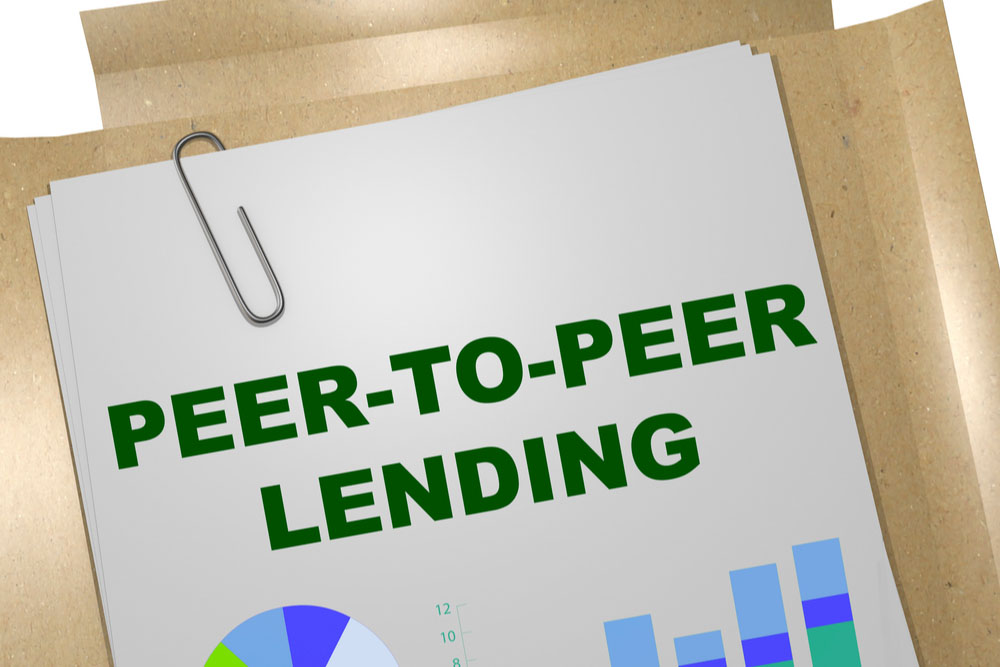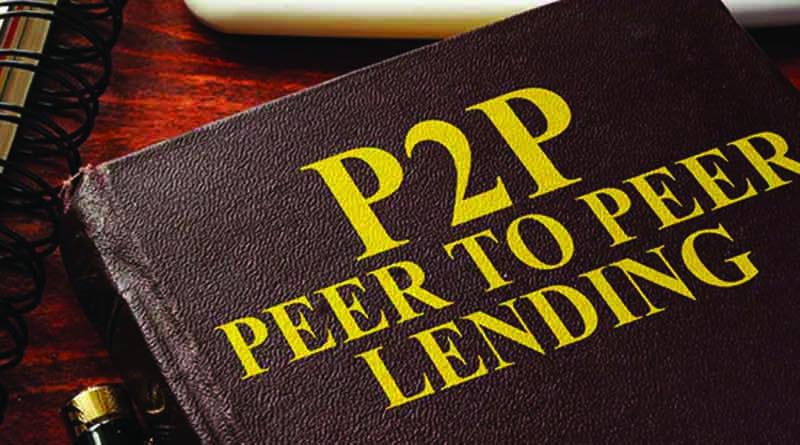Are you having trouble qualifying for traditional bank loans?
Maybe you’re lacking cash flow? Or do you currently have low credit?
Luckily for you, these loans are not your only option for financing.
If you’re looking for additional cash to fund home improvements or car repairs, this is the most important article you’ll read today.
Let me introduce you to a more modern type of loan.
Peer-to-peer lending is a way for borrowers to connect with an individual or a group of investors who are willing to help grow their business or buy new equipment.
With over two decades of experience in the world of finance as a banking expert and financial coach, I’ll not just show you the pros and cons of this funding.
Below, I’ll also reveal how peer-to-peer lending works and how it differs from traditional bank loans.
So, what even is peer-to-peer lending?

What is peer-to-peer lending?
Peer-to-peer lending, or P2P lending, is a form of lending where individual investors finance loans rather than going to banks or other financial institutions.
Nowadays, many commercial investors are available, and they can be found online.
Online platforms like Prosper and Upstart are great for finding and connecting you to investors. These platforms will distribute your loan application to various investors.
Many people like P2P lending since requirements and qualifications are more lenient than going through banks, credit unions, and other financing options.
It’s possible to use a P2P loan just like a normal loan from a bank.
For instance, P2P loans can act as personal loans to cover home renovations or even to buy equipment for your business.
However, it’s important to research your lenders first before applying since some P2P lending platforms only allow a certain type of use for their funds, such as medical expenses.
Similar to traditional lenders, P2P lenders can also check your debt-to-income ratio and credit to help them decide whether to approve or deny your loan application.
But don’t lose hope! Many P2P lenders are less strict about their requirements and qualifications.
For instance, some lenders are still willing to work with individuals who have poor or fair credit scores.
How does peer-to-peer lending work?
If you want to take out a peer-to-peer loan, you should know that most of them are arranged in online lending platforms.
Most of the time, the whole process is done online and will take only a short time. Here’s how P2P lending works:
- Application: First, check if you qualify for the loan. Then, fill out the application online. Keep in mind that lenders will do a hard inquiry, which can temporarily lower your credit score.
- Approval: After submitting your application. Lenders typically take a day to approve it. If you’re approved, review your interest rate.
- Funding: Once approved, investors will review your loan listing, including the loan amount, and decide whether to fund your application.
- Transfer of funds: Once enough investors have funded your loan, you’ll finally get the funds, which is usually done by electronic transfer (depending on the lender).
- Loan payments: Based on your repayment terms, make fixed monthly payments that are disbursed to all the investors in your loan.
What fees do peer-to-peer lenders charge?
Peer-to-peer lenders typically charge an origination fee, usually up to 8% of your loan amount.
The origination fee can be charged upfront or deducted from your total loan amount.
Watch out for late fees; that’s why repaying your debt on time is crucial.
Also, check for any additional fees your lender may charge, as these can easily lessen the value of your loan.
If you want to know more about business loan fees, I’ve written a separate article about small business loan fees and whether or not you can avoid them. You should definitely check it out!
What are the pros and cons of P2P lending?
Just like with any other loan, P2P lending has benefits and drawbacks.
Here’s a quick breakdown of the pros and cons of P2P lending:
| Pros Of P2P Lending | Cons of P2P Lending |
| P2P lenders are willing to work with entrepreneurs with low credit. | Tend to have higher fees than traditional loans |
| Quick and easy access to funds | Expect to pay higher interest rates than traditional loans |
How Does It Work If I’m The One Who Wants To Lend Money?
If you’re the one who wants to help out other entrepreneurs through P2P lending, you’ll need to create an online account that you can use to view and assess different loan options and terms.
You can track the borrower’s loan repayment in your online account.
Similar to any other type of loan or investment, there are still risks with P2P lending.
Some platforms will assist in deciding on loans, while others will give you little control over various processes. For instance, some platforms will distribute your money automatically.
What Can You Use A Peer-To-Peer Loan For?
Since most P2P loans are unsecured personal loans, you can use them for almost anything under the sun!
For instance, you can use funds from a peer-to-peer loan for:
- Car purchase
- Car Repair
- Debt consolidation
- Medical bills
- Growing your business
- Buying an expensive equipment
- House Renovation
- Moving expenses
Remember that it will still depend on the lender.
Some lenders won’t let you use the funds for gambling.
Some lenders also prohibit using it for investments and education expenses.

Where Can You Find a P2P Loan?
If you’ve decided and you really want to get a peer-to-peer loan, here are a few of the most famous platforms where you can start your quest to find that much-needed financing:
- Prosper: Prosper was founded in 2005, making it the first peer-to-peer lender in the United States. Prosper offers personal loans that can range from $2,000 to $50,000. However, Prosper needs a minimum FICO score of 600 to qualify for their loans.
- Kiva: Kiva helps link borrowers who lack funds to assist in growing their small businesses with multiple lenders whose main goal is to help, not to profit. In Kiva, you’ll need to get several lenders to fund your loan through the platform. Once the goal is complete, the funds will be available for you to access.
- Funding Circle: This online platform helps you connect with various investors who can offer term loans and lines of credit for qualified entrepreneurs.
What is the difference between peer-to-peer lending vs. bank loans?
One of the major differences between P2P loans and traditional bank loans is who funds the loan.
If the funds come from an online lender that includes an individual or a group of investors, it’s called a peer-to-peer loan.
On the other hand, if the funds came from a financial institution like a bank or credit union, then it’s considered a traditional bank loan.
If you currently have good or excellent credit, banks offer loans with low interest rates.
However, you’re probably looking for alternative financing options if you’re not confident about your credit history.
That’s where peer-to-peer lending can be helpful since lenders here don’t care too much for your credit.
Another advantage of taking out a P2P loan is that you’ll get the funds quicker than traditional bank loans.
On the other hand, P2P loans and bank loans still have similarities. For example, loan amounts and repayment terms are often the same for these loans.
What Is Peer-To-Peer Lending: Summary
If you’re struggling to qualify for traditional bank loans due to cash flow issues or a low credit score, P2P lending could be your golden ticket.
It’s like having a crowd of supporters ready to fund your needs, whether it’s home improvements or new business equipment.
Remember, while P2P loans offer lenient qualifications and quick processes, it’s crucial to research your lenders and understand the terms.
Ready to dive into the world of peer-to-peer lending? Your financial future awaits!
